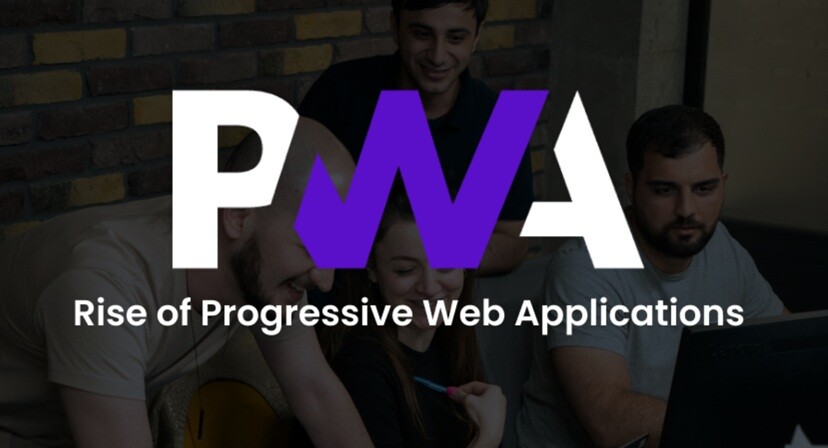A few years ago, Google introduced a new concept to the tech world – Progressive Web Apps (PWAs). Initially, there was little uptake, as it often takes time for the market to evaluate and adopt new technologies. However, PWA has made great strides in recent times, becoming a growing trend that many manufacturers are actively exploring.
So, what exactly is a Progressive Web App? PWA is a unique web application designed to provide users with a mobile application-like experience.
Essentially, PWAs combine the best of both worlds: they work like websites but offer native app features like push notifications, GPS functionality, and offline accessibility. Users can also install PWAs directly on their home screen through their browser, eliminating the need to download the App Store.
PWA vs. Mobile Apps: Key Differences Explained
PWA stands for Website Based App, providing the same content management system. It makes it easy to manage application content native mobile apps are not the same as websites. Therefore, they need to be handled separately.
1. Development and Platform Dependency
- Mobile apps are platform specific. They require separate development for iOS (using Swift or Objective-C) and Android (using Kotlin or Java), which increases development time and costs.
2. Installation and Access
- There’s no need to install a PWA through the App Store. Users can add it to their home screen directly from their browser with minimal effort.
- Mobile apps must be downloaded and installed through an app store (such as the Apple App Store or Google Play), often requiring more storage space and multiple steps.
3. Performance Characteristics
- PWAs rely on the browser to function. Therefore, their functionality is quite limited compared to native applications. However, they support features such as push notifications, offline mode, and GPS.
- The mobile app offers excellent performance and can use all device hardware and system features such as cameras, sensors, and advanced graphics processing. Making it suitable for jobs that require a lot of resources.
4. Offline Function
- By storing data using human service personnel, PWA can work in offline or low-touch environments. However, offline capabilities are limited compared to mobile apps.
- Mobile apps often have full offline functionality if they are designed to be used. This is because the app stores data locally on the device.
5. Innovation and Maintenance
- PWAs update themselves in the background, ensuring that users always have the latest version without having to update manually.
- Mobile apps require users to download updates through app stores, which can lead to fragmentation when users share or skip updates.
6. Classification and Visibility
- PWAs are accessed via a URL, making them easily shared and discoverable via search engines.
- Mobile apps rely on app stores for visibility, which can involve a complex approval process and additional marketing efforts.
7. Touch and Development Time
- PWAs are cost-effective, and quick to produce because the same version works across platforms.
- Mobile apps often require large budgets and long development cycles due to platform-specific coding requirements
Advantages of Progressive Web Apps
- Native app experience: PWAs mimic the look and feel of native apps. Provides intuitive interactions and smooth navigation.
- Platform cost-effectiveness: PWAs run on all operating systems without having to be developed separately. Therefore, it can be created at a very affordable price compared to mobile apps…
- Access to device features: PWAs can use device capabilities such as geolocation, microphone, and camera to increase performance.
- Reduced development and support costs: On average, PWAs are 70-90% cheaper to develop and maintain than native mobile apps.
- Faster time to market: PWAs can be deployed faster compared to native applications. Helps businesses launch faster
- No App Store Dependency: PWAs bypass the need to publish on the App Store, saving time and money involved in the submission and compliance process.
- Improved Performance: PWAs load faster than traditional websites and can work offline using stored data. This ensures a consistent user experience.
- Lightweight storage requirements: PWAs require little storage space. They are typically only a few tens of kilobytes in size. This makes it ideal for devices with limited space.
- Automatic Updates: PWAs eliminate the need for manual updates. Users can access the latest content and features at any time without extra effort.
Disadvantages of Progressive Web Apps
- Limited iOS support: Some PWA features are not fully supported on iOS devices. For example, there are no push notifications, while Android handles them without any problems.
- Hardware restrictions: Access to certain hardware components of PWAs, such as the fingerprint scanner, proximity sensors, and Bluetooth functionality, is restricted to only a portion of them
- High battery consumption: PWAs can consume a lot of battery power compared to native apps due to their reliance on web technology.
- Cache timeout information: If a user is inactive with the PWA for a long period (e.g., weeks), the cache files may be deleted, leaving only the app icon on the home screen
- Adding manual icons: Adding PWA icons to the home screen requires a manual action through device settings, which some users may be able to turn off.
Conclusion
Progressive web applications (PWAs) have emerged as a powerful alternative to traditional web and mobile application development, combining the best features of both. They offer significant advantages, such as cost efficiency, rapid deployment, cross-platform compatibility, and small storage requirements. With capabilities like offline access, push notifications, and seamless user experiences, PWAs are increasingly attracting businesses and developers.
Ultimately, PWA is an excellent choice for businesses looking for a budget-friendly, versatile, and easy-to-use solution to reach a large audience. Understanding their strengths and weaknesses will help you determine if they fit your specific needs and goals.
You may also like to read,










